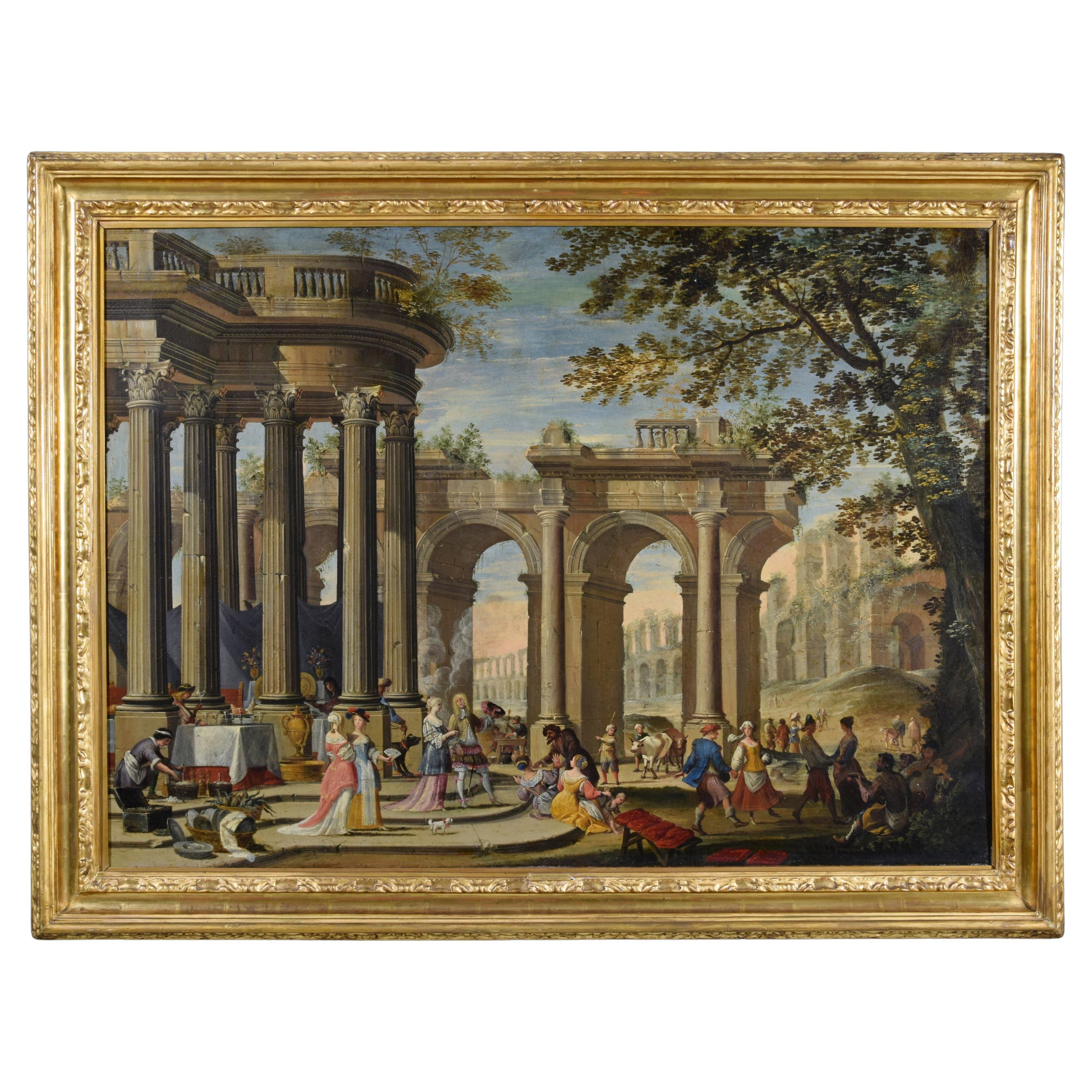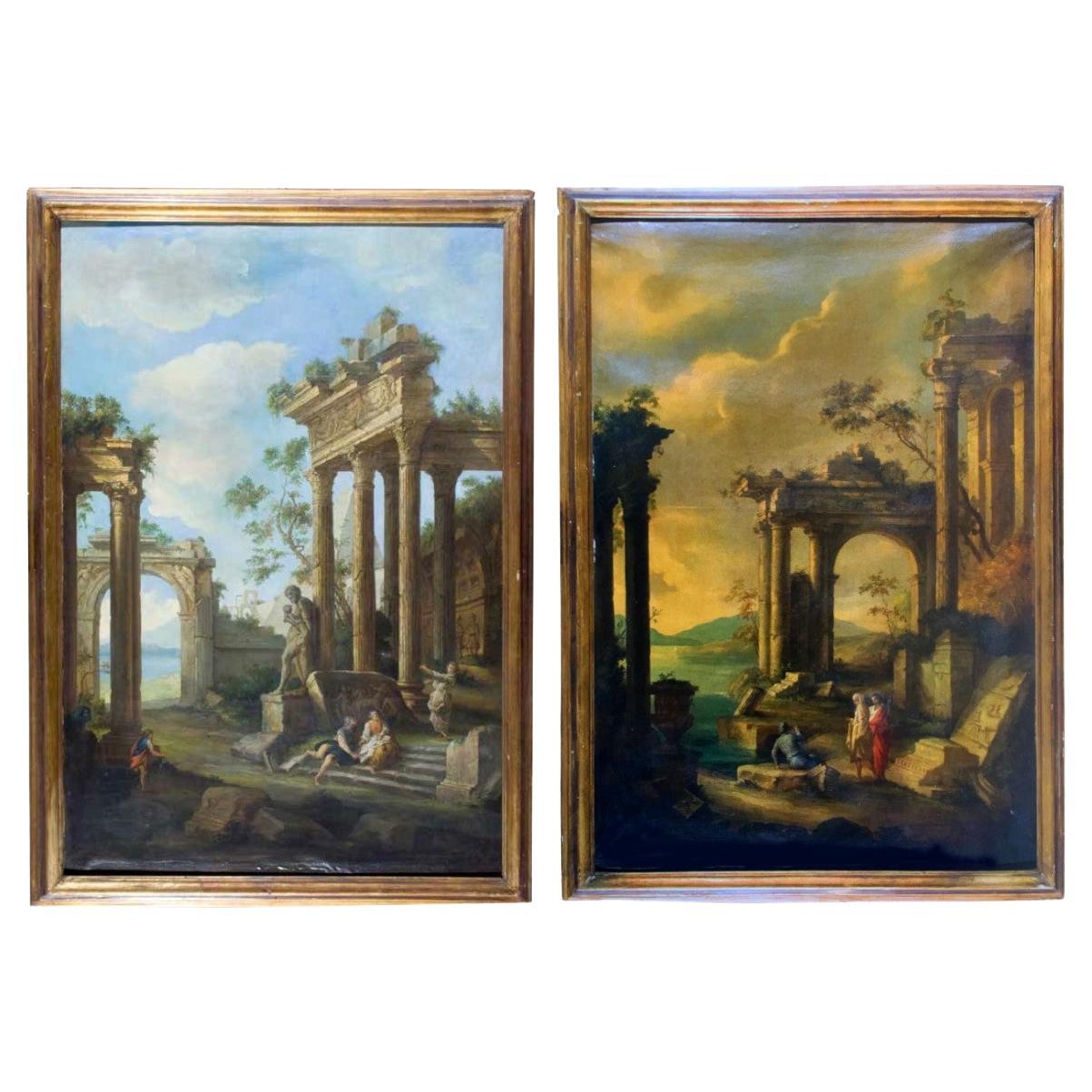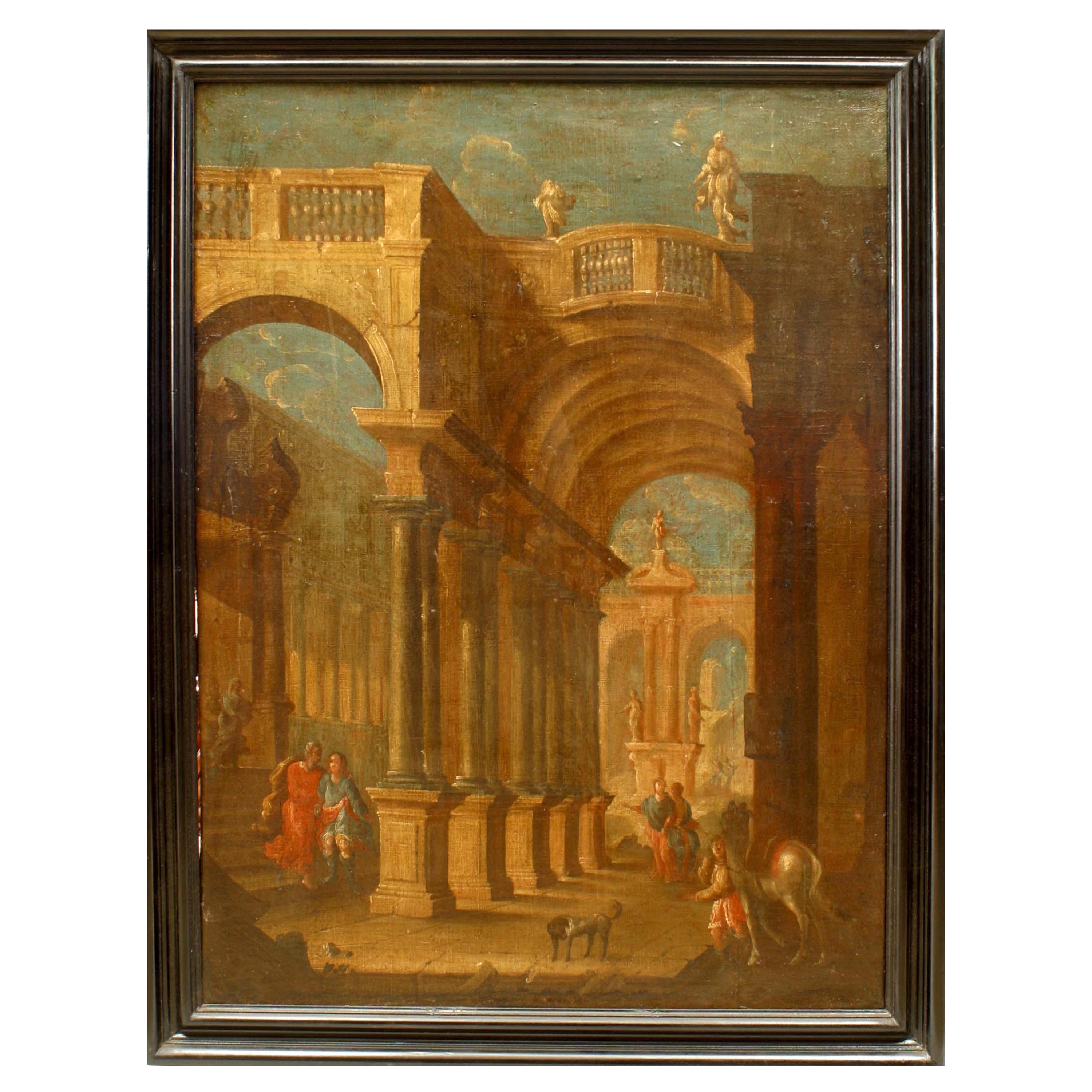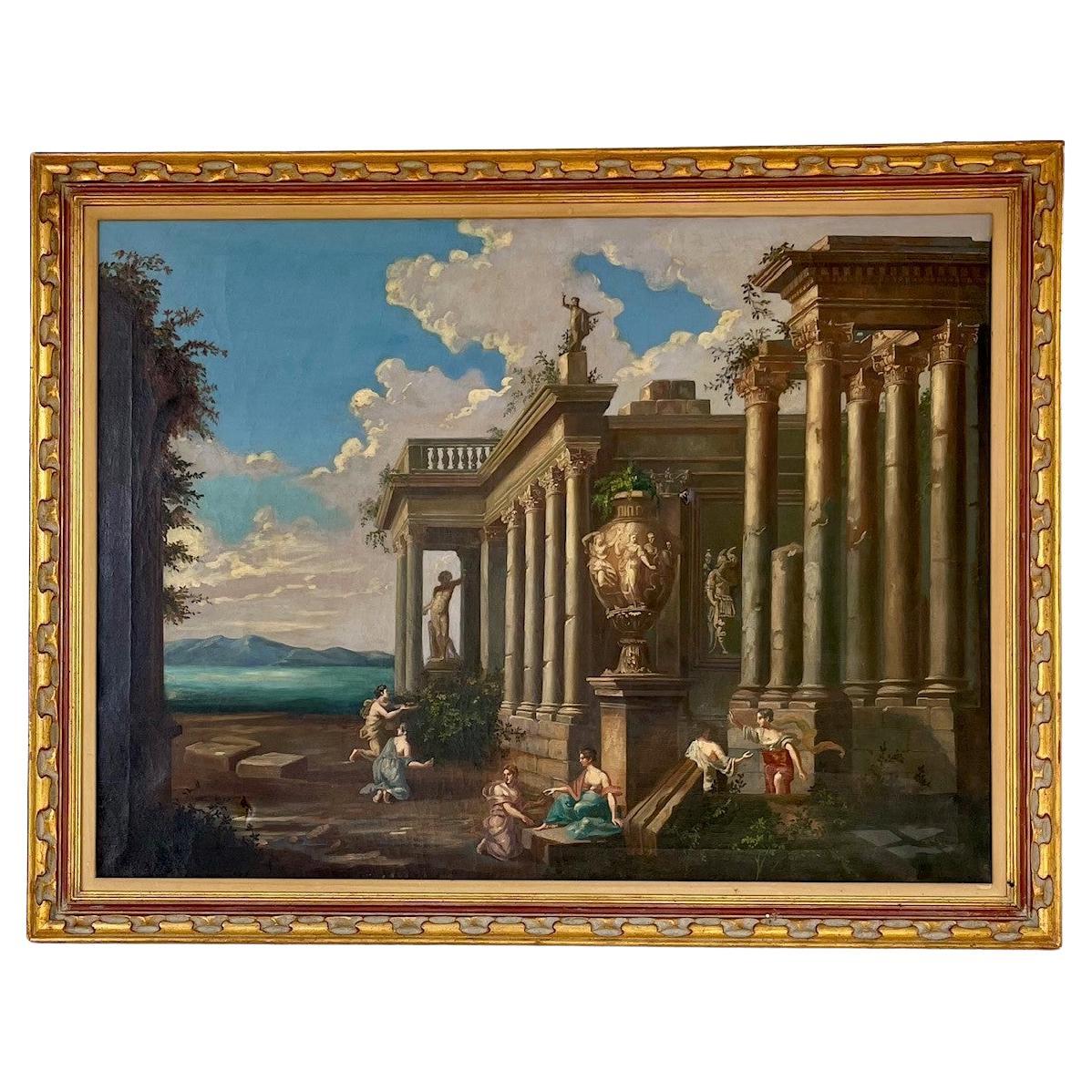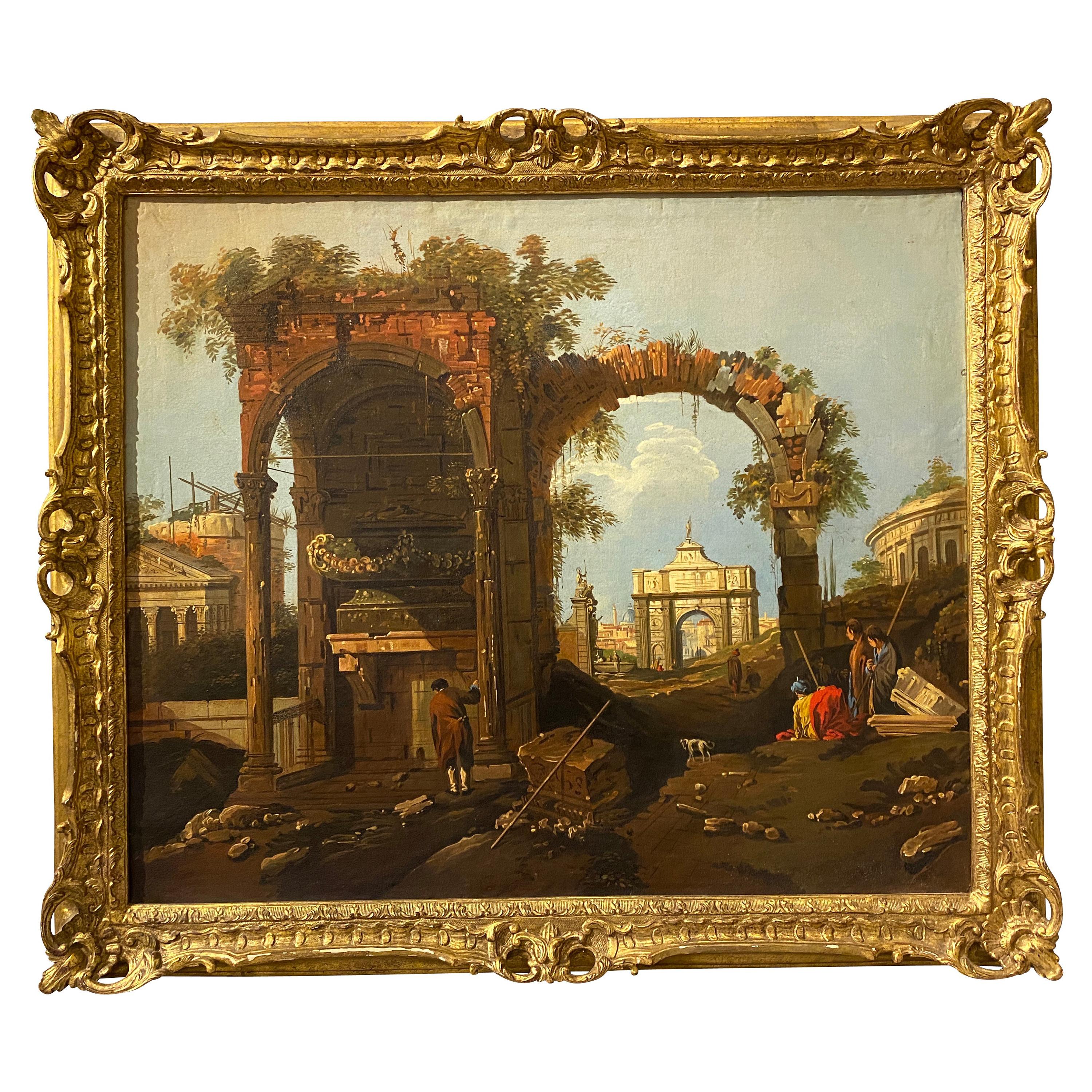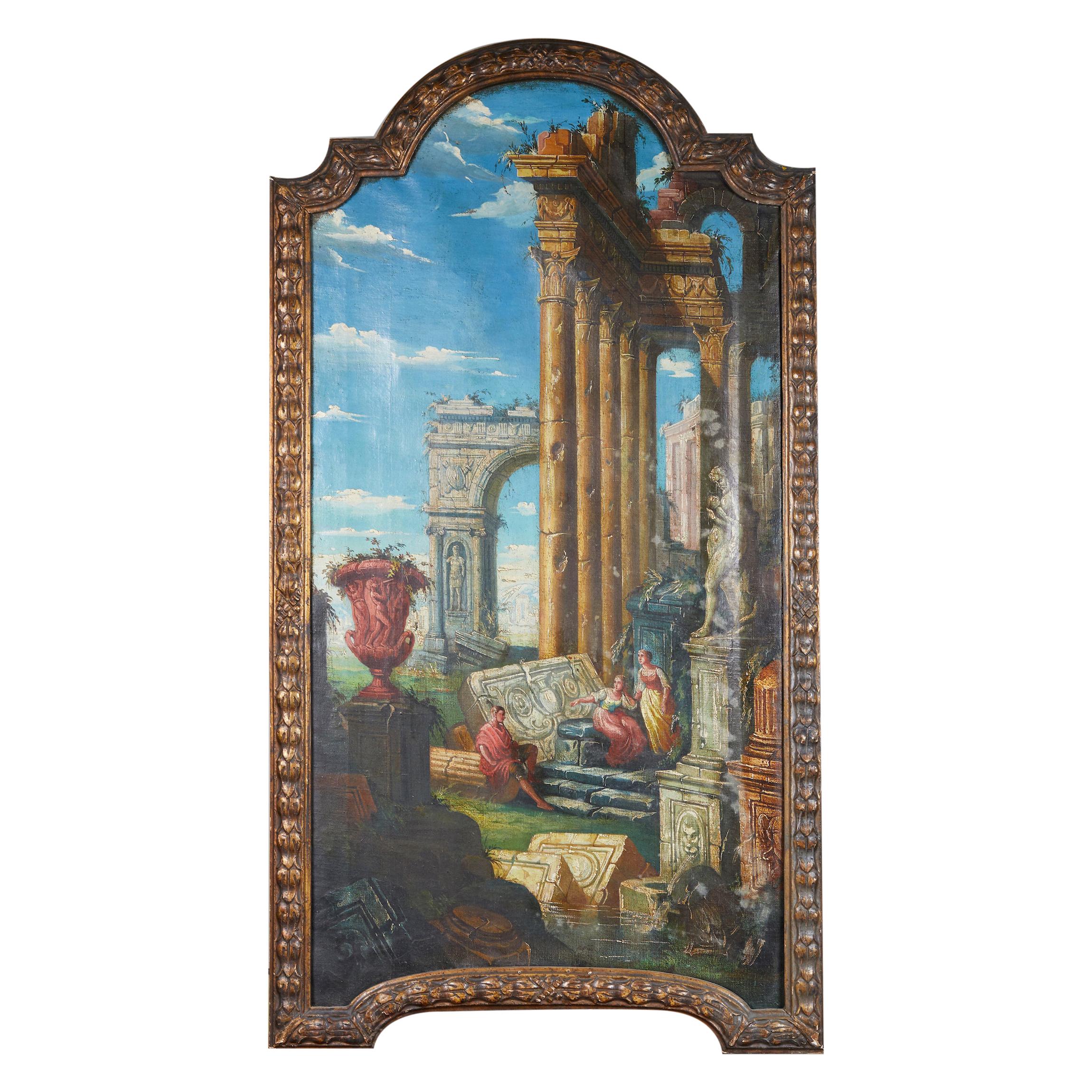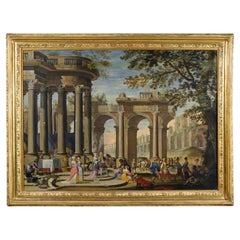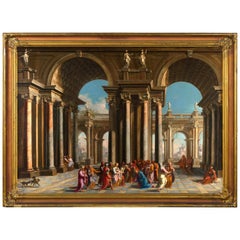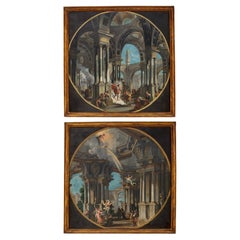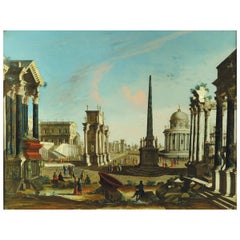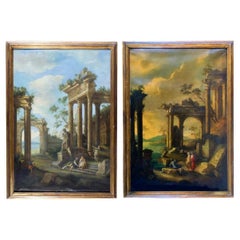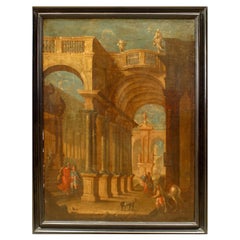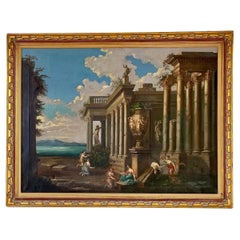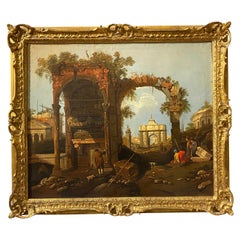Items Similar to Alberto Carlieri, Painting with Architectural Capriccio
Want more images or videos?
Request additional images or videos from the seller
1 of 12
Alberto Carlieri, Painting with Architectural Capriccio
$89,860.77
£66,895.50
€75,000
CA$123,086.79
A$136,899.38
CHF 71,484.60
MX$1,665,919.80
NOK 912,967.44
SEK 856,202.39
DKK 570,948.81
Shipping
Retrieving quote...The 1stDibs Promise:
Authenticity Guarantee,
Money-Back Guarantee,
24-Hour Cancellation
About the Item
Alberto Carlieri (Rome 1672-1720)
"Architectural capriccio with the preaching of Saint Paul in the Areopagus of Athens"
Oil on canvas, measures with frame W 172 x H 127 x D 10,5 (only canvas cm W 135 x H 99)
The large and very interesting oil on canvas painting depicts an architectural capriccio with the preaching of Saint Paul in the Areopagus of Athens. The work is attributable to the famous Italian painter Alberto Carlieri (Rome 1672-1720).
The composition is characteristic of Carlieri’s artistic expression. The subject depicted, or The sermon of Saint Paul, is set among powerful architectural remains of fantasy, called «Architectural Capriccio». The architectural capriccio, an artistic genre that has made its way into Italian painting since the 17th century, is characterized by the representation of fantastic architectures or inventions of perspective type, sometimes combined with elements drawn freely from reality.
The canvas in question has a considerable artistic interest and significant pictorial quality. The spectacular architecture of invention gives solemn classicism to the place, amplified by the play of light and shadow, acting as a theater and as a frame to the scene.
In the foreground, a partially collapsed colonnade emerges from the shadow on the right, while on the left, there are piled on the ground parts of columns including a capital of the Corinthian order. The characters are in the middle of the canvas, in the background.
All around are described the remains of classical buildings, characterized by composite style, smooth columns, Corinthian capitals, trabeation with metopes and Doric friezes. On the right is a sepulchre and even beyond a large carved marble vase with bas-reliefs. To close the architectural environment there is a powerful building with an arch and large arche, bas-relief with Roman soldiers, pilasters and composite columns. Some greenery has sprung to its peak, giving picturesque features to the canvas. The landscape fades to the horizon where you can see a bay, the sea and a promontory described with blue tones. The clear blue sky is marked by pink grey fluffy clouds.
The scene described is Saint Paul’s Sermon in the Areopagus of Athens. Saint Paul is clearly recognizable by some elements that belong to his traditional iconography: depicted bald, with a long beard and elongated shape, he wears a green tunic with a red cloak and grips, here with his left hand, A sword with a point on the ground. The sword, a symbol of power, has a double interpretation: it alludes both to the take-off, or the martyrdom of Saint Paul, and to the power of faith and the proclamation of the divine word. In fact, Paul spoke to the Gentiles, the peoples of Greek-Latin culture, considered pagans by the Jews, of «the sword of the Spirit, that is, the word of God» (Eph. 6:17). The sword is a part of the spiritual armor that Paul says he should wear to allow him to effectively fight evil.
The scene is inspired by the time Paul makes a speech in Athens at the Areopagus (in Acts 17:16-34). It is one of the most dramatic and detailed moments of St Paul’s missionary career.
The Apostle had encountered opposition in his preaching at Thessalonica and at Berea in northern Greece and, between the end of 49 and the beginning of 50, he went to Athens to be safe. Distressed to see Athens full of idols, Paul goes to the Areopagus, the high tribunal of Athens, to explain what he claimed. " Areopagus" literally means "Rock of Ares"; it was a place where there were temples, cultural structures and it was the high court of the city. Paul’s speech is based on five main points: the ignorance of pagan worship; the object of worship is the one Creator God; God’s relationship with humanity; idols of gold, silver, and stone as objects of false worship; and in conclusion, it is time to put an end to ignorance. This discourse is one of the first attempts to explain the nature of Christ and is a first step in the path leading to the development of Christology.
The work, painted with great finesse also in the details and in the small figurines, is certainly attributable to the important Roman painter Alberto Carlieri (Rome, 1672 - 1720) because you can find common stylistic reasons of his works. Characteristic elements are the suggestive compositional arrangements and the remarkable mastery in the direction of the lights, as well as the richness of the architecture and the refined, as well as meticulous, descriptive details. Peculiar to the author is also the lively attitude of the figures, resolved with ease in the use of color, and inserted harmoniously in the architecture.
Carlieri was born in Rome in 1672 and began studying the painting of architecture under the guidance of Giuseppe de Marchis. He became a pupil and later collaborator of Andrea Pozzo. Present in the most illustrious Roman paintings, from the collection of Filippo II Colonna, Rospigliosi and Cardinal Valenti Gonzaga, Carlieri elaborates compositional models well recognizable, influenced, as well as by the painting of the master also that of Viviano and Nicolò Codazzi. His pictorial activity can be traced through the signed works, around which it was possible to build a not small catalogue of canvases. News of the Carlieri and his signed or dated works are between 1690 and 1720. Nothing is known about the life of the painter, who should have died in Rome shortly after 1720.
Among the studies on the Carlieri is significant what investigated by Marshall, and later reiterated by Giancarlo Sestieri, about the influence that Giovanni Ghisolfi (Milan 1623-1683) and Giovanni Paolo Panini (Piacenza 1691 - Rome 1765) had on the architecture of our painter. There are some attributive perplexities for certain works, historically given to Panini or Ghisolfi, which could instead be returned to Carlieri or vice versa. At the center of an attributive diatribe is the Capriccio with the preaching of an apostle preserved as Panini autograph at the Christian Museum of Esztergom in Hungary but which was also attributed to Ghisolfi or Carlieri himself, as proposed by Sestieri. Certainly our painter, especially in the paintings developed vertically, proposes numerous elements taken from the "Esztergom composizion", as is defined this compositional module in all its variants
These are compositions in which the great architectures are fragmentary; picturesque greenery partially cover them; architectural remains are piled on the ground; there is always an architectural detail with the trabeation of the colonnade interrupted; the perspective has a lateral escape from the composition; it is often set a scene depicting the preaching of Christ or a saint.
Carlieri uses this compositional scheme assiduously. We can also partially find it in the painting in question though it is developed horizontally.
In these paintings, and in general in the works of this artist, are often found some figures or objects that the author likes to insert with some small variations. Among these is the classic stone vase with female figures in bas-relief.
The same is true of the half-stretched character who holds his arm on the ground. This particular, very frequent and also depicted in a mirror way, can almost be considered a signature of Carlieri.
The author depicts several times the preaching of an apostle. As Sestieri points out, they had to be the subjects to lead the commissions of Carlieri. To some, therefore, it was more successful, according to their numerous versions, such as the «Parables» or the «Sermons» of Christ or the Apostles.
Some of the most significant examples have been compared in this study.
We apologize for any errors in translation from Italian.
Please, contact us to have the expertise in Italian.
- Attributed to:Alberto Carlieri (Artist)
- Dimensions:Height: 50.01 in (127 cm)Width: 67.72 in (172 cm)Depth: 4.34 in (11 cm)
- Style:Baroque (Of the Period)
- Materials and Techniques:
- Place of Origin:
- Period:Late 17th Century
- Date of Manufacture:Late 17th Century
- Condition:Refinished. The painting has been restored with a cleaning of the surface, removal of the yellowed varnish and repainting with transparent finish varnish.
- Seller Location:IT
- Reference Number:1stDibs: LU4405221483832
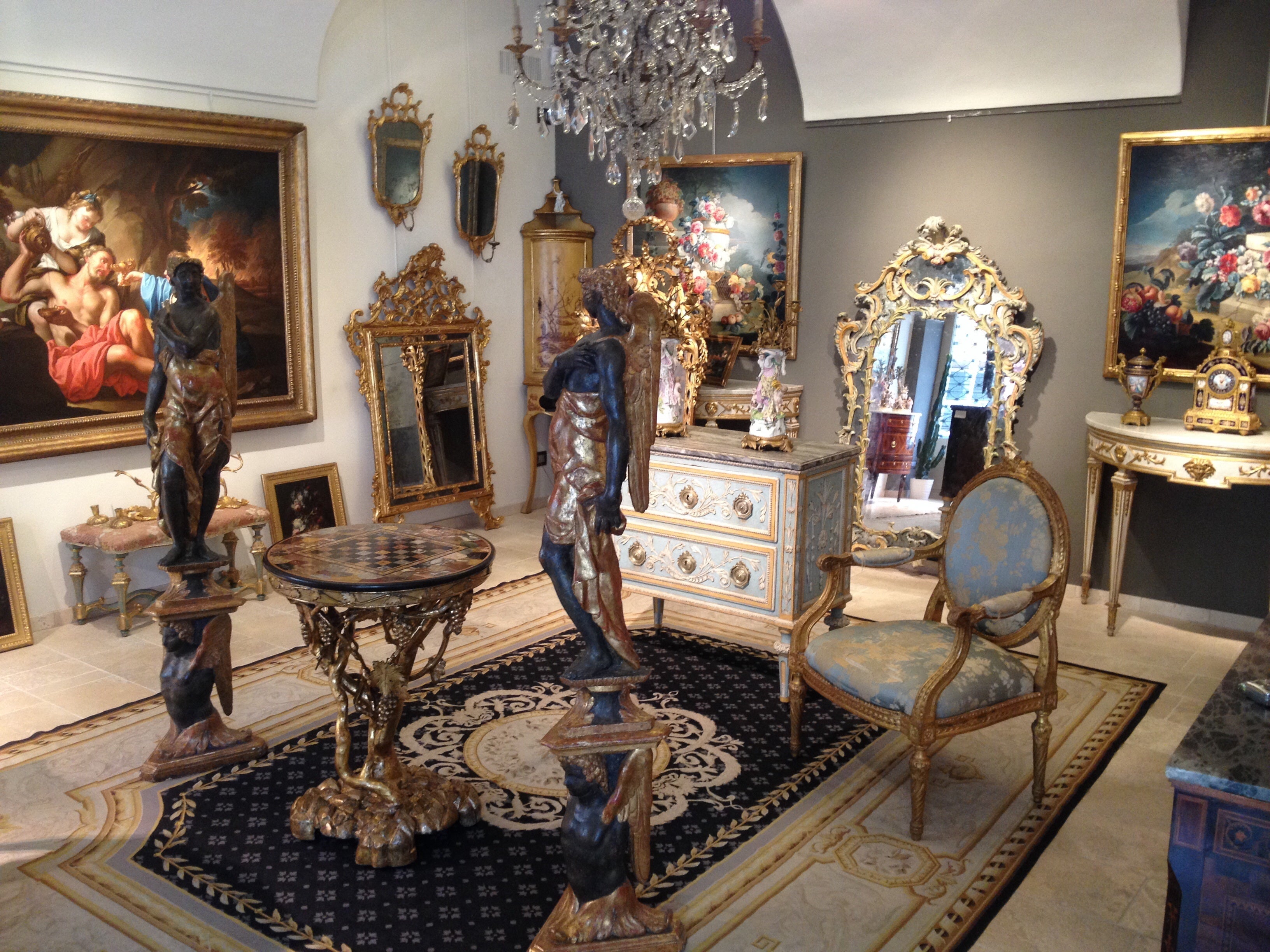
About the Seller
5.0
Platinum Seller
Premium sellers with a 4.7+ rating and 24-hour response times
Established in 1980
1stDibs seller since 2019
56 sales on 1stDibs
Typical response time: <1 hour
- ShippingRetrieving quote...Shipping from: Italy
- Return Policy
Authenticity Guarantee
In the unlikely event there’s an issue with an item’s authenticity, contact us within 1 year for a full refund. DetailsMoney-Back Guarantee
If your item is not as described, is damaged in transit, or does not arrive, contact us within 7 days for a full refund. Details24-Hour Cancellation
You have a 24-hour grace period in which to reconsider your purchase, with no questions asked.Vetted Professional Sellers
Our world-class sellers must adhere to strict standards for service and quality, maintaining the integrity of our listings.Price-Match Guarantee
If you find that a seller listed the same item for a lower price elsewhere, we’ll match it.Trusted Global Delivery
Our best-in-class carrier network provides specialized shipping options worldwide, including custom delivery.More From This Seller
View All18th Century, Painting Architectural Capriccio, att. to Isaac De Moucheron
Located in IT
18th Century, Painting with Architectural Capriccio with figures, attributed to Isaac De Moucheron
Measures: canvas cm H 108 x L 152; with frame cm H 132 x L 176 x 8
The painting i...
Category
Antique 18th Century Dutch Baroque Paintings
Materials
Canvas
Alberto Carlieri, Capriccio with Christ and the Adulteress, Oil on Canvas
By Alberto Carlieri
Located in IT
Alberto Carlieri (Italy-Roma 1672-1720), "Christ and the adulteress",
Oil on canvas, with frame cm H 115 x L 151 x 6.5, only canvas H 98.5 x L 135 cm...
Category
Antique Late 17th Century Italian Baroque Paintings
Materials
Canvas
18th century, Couple of Italian Paintings Capriccio with Mythological Scenes
Located in IT
Couple of architectural capriccio with mythological scenes, oil on canvas, painter from Bologna active in the 18th century
The two large and valuable pantings depict two architectur...
Category
Antique Early 18th Century Italian Baroque Paintings
Materials
Canvas
18th Century, Roman Architectural Capriccio Attributed to Francesco Chiarottini
Located in IT
Francesco Chiarottini (1748-1796)
Roman Architectural Capriccio
Oil on glass, cm 52 x 67 without frame, 63.5 x 79cm with frame
The valuable painting, attributed to the Italian p...
Category
Antique Mid-18th Century Italian Neoclassical Paintings
Materials
Glass
Italian Painting Architectural Capriccio with Caio Cestio Pyramid after Panini
Located in IT
19th century, Italian Painting Architectural Capriccio with the Pyramid of Caio Cestio, Roman painter, after Giovanni Paolo Panini, unsigned.
Dimensions: cm H 48 x W 63.5, frame H 6...
Category
Antique 19th Century Italian Rococo Paintings
Materials
Wood
Couple of Italian Paintings Depicting Capricci, Francesco Aviani ‘1662-1715’
Located in IT
Francesco Aviani (Italy - Venice, 25-11-1662 / 1715) att.
Couple of paintings depicting Capricci
Oil on canvas, 135 x 183 cm, without frame
The two large and fine paintings depict two illusionistic architectural renderings, with views of colonnades and arched buildings, animated by figures. The compositions are characterized by the harmony with which the painter introduces the sumptuous architectural monuments, the mirrors of water, the buildings in the distance and the views of the landscape. Dominates with a color on the tones of brown and ochre that stands out on the blue sky, marked by some cloud of steam. The insertion of the figures to enliven the architectural views also balances with the set.
The Capriccio, an artistic genre that has made its way into Italian painting since the 17th Century, is characterized by the representation of fantastic architectures or prospective inventions, sometimes combined with elements drawn freely from reality. The two paintings are an example of this type and they are a very interesting and Fine artwork.
The remarkable pictorial quality emerges both from the composition of the ensemble and from the way in which the artist describes the views with great attention to detail, highlights and refined, perfectly realistic, chiaroscuro.
The same must be recognized for the figures: these are described with a wise brushstroke, quick and quick touches give the dynamism of the moment that is captured, as if time had stopped to show and narrate what is happening.
The painting on the right represents a large Baroque building in stone and paved with marbles, two floors, with moving façade, large columns with corinthian columns, a large portal with a staircase with large footsteps, a balustrade with string, from which some figures appear, and two equestrian monuments in bronze. The sumptuous building overlooks a large POOL of water, with a gushing fountain, around which some characters sit. In the second floor is described a white palace from which rises a tower crowned by a structure with wrought iron loggia. In addition there is a bridge and some architectural ruins behind which some mountainous reliefs fade towards the horizon.
On the staircase is described a particular scene. The people seem to be part of a very precise story. A woman, in the shadow of a parasol supported by a servant, would seem to drive out of the palace a man, who, taken under his arm by two maidens with a determined attitude, is led to a boat.
The scene could be identified with the biblical episode of the parable of the prodigal son (Luke 15,11-32), at the moment when the prodigal son is robbed and driven away by the harlots.
The episode tells of a man with two children. The youngest said to his father: “Father, give me the part of my inheritance”. And the father divided the substances. After not many days, the youngest son, collected his things, left for a far country and there he lost his substances with prostitutes and living as a debaucher. When he had spent everything, there came a great famine in that country and he began to find himself in need. Reduced to hunger, he was forced to be a pig herder to survive. He therefore meditated in his heart to go to his father and ask for his forgiveness and to be welcomed anew, even as a servant.
While still on the road, however, the father saw him and ran towards him, receiving him with open arms. He then ordered his servants to prepare a great feast for the occasion, killing for the purpose the "fatty calf". The firstborn did not understand why his brother was given such treatment, and reminded the parent that he, who had always obeyed him, had never received a single kid to celebrate with his friends. The father answered him: «Son, you are always with me and everything that is mine is yours; but it was necessary to celebrate and rejoice, because this brother of yours was dead and came back to life, was lost and was found».
The parable of the prodigal son was often portrayed in painting and the scene he finds most is certainly that of returning home in his father’s arms. Among the many is a canvas by the famous painter Giovanni Paolo Pannini (or Panini) (Italy – Piacenza, 1691– Rome, 1765) kept at the Hallsborough Gallery in London.
Rather rare, however, is the scene of the prodigal son driven and robbed by harlots. There is an engraving by Hans Collaert II (1561-1620) in which this moment is described in the background compared to the moment, narratively later, in which he is penitent among the pigs.
The second painting, certainly pendant of the first, represents a similar palace, with some characters overlooking the balustrade marcapiano and other figures around the large bathtub quadrilobata. In the foreground is described a monument with two large stone sculptures. In the distance some architectural elements and, beyond, the mountains are lost on the horizon.
The studies related to the numerous painters of architectural views and caprices, active in Italy, and the archival documents found, which could better clarify commissions, biographies and certain works, are scarce and sporadic. Therefore there are still many difficulties in reconstructing a catalogue of autograph works for each author. Through paintings in private collections, in museums and paintings passed on the antique market it is however possible to advance some attributions in order to better delineate the various artistic figures.
The style of the works studied here leads to a dating that runs between the 17th and 18th Centuries, with obvious influences dictated by the perspectives of the brothers Galli Bibiena. The analysis of the architectures and the chromatic palette suggests that we are in the presence of a northern Italian and Venetian author. Observing the decorations and the volutes, the brightness and the perspective disposition in fact, we find several analogies with those used by the Vicenza painter Francesco Aviani, excellent in pictorial perspective and architectural views.
The biographical profile of Francesco Aviani (Italy - Vicenza, 1662-1715) was essentially traced in 1956 by Andreina Ballarin, then re-visited by Federica Spadotto in 2014 and Giancarlo Sestieri in 2015. Certain documents about his life are scarce, as are the documented works.
He was born in Venice, probably on 25 November 1662, to Bernardo and a Magdalene whose surname is unknown, and was baptized on 3 December 1662. Between 1701 and 1703 he worked, together with his brother MarCo, sculptor, for the fresco decoration (now illegible) of the church villa in Soella (Vicenza). On October 16, 1703 he married Isabella Carcano. On March 26, 1715 he made a will and died on April 3 of the same year, in Vicenza.
The frescoes in the refectory of the sanctuary of Monte Berico in Vicenza are considered authentic works by Aviani, probably made in 1708; the paintings preserved in the Civic Museum of Vicenza: “Landscape with Lazzaro and the rich Epulone”; “Christ among the doctors”; “The miraculous fishing”, works not datable but with attribution corroborated by style. In addition, the frescoes in the east and west corridors of the Villa La Rotonda, near Vicenza; the fresco in the apse basin of the chapel of the church S. Croce, Vicenza, now destroyed; the frescoes of the central hall of Villa Camerini a Montruglio (1714) and a painting of a “Porto Regio”, of which we have a print engraved by Dall'Acqua.
From his works emerges the artistic background that animated the Venetian culture in the early eighteenth century. The scenic grandeur with which Aviani treats the architecture also suggests a stay in Emilia of the painter, in which he could have come into contact with the environment of the Bibiena. These contacts would be confirmed by the press of Cristoforo Dall'Acqua (Vicenza 1734-1787), “Il porto regio”, after a painting of Aviani. The press was part of a group of engravings, representing royal buildings, reproducing paintings of the Bibiena. In the eyes of Dall’Acqua, therefore, Aviani’s work was not foreign among those of the Emilians.
Inside the sumptuous architectural whims, Aviani often depicts biblical scenes, in which the characters share the space and the narrative rhythm, along with figures drawn from everyday scenes, memories of the Veronese and Bassano heritage. Also in the works covered by this study the author does not seem to want to give up a biblical subject, though the purpose of the paintings appears to be clearly a staging scenography-architectural within which the characters are relegated to the role of extras.
From the examination of the architectural Capriccio gathered under the name of Aviani then emerge common elements. The comparison between these works and the works in question highlights the proximity of the compositions. The imposing and scenic architectures are in fact equally characterized by the perspective-scenographic ability diffused in emilian “quadraturisti” and in Bibiena work. In fact, you can see the spectacular slender architecture in the lower part, the loggias that create chiaroscuro games with arches and binate columns placed on massive bases and overhung by projecting cornices.
Significant also the comparison with two paintings with architectural whims in a night vision attributed to Francesco Aviani.
In Aviani’s works it is possible to find a certain knowledge of the Roman Codazzi paint nd its early development of the eighteenth century, developed with the Locatelli, the Pannini and the less known Domenico Roberti. To Roberti have been recently attributed two works that have some compositional affinity with the canvases in question. The same can be done for a work on the antique market, attributed to Pietro Francesco...
Category
Antique Late 17th Century Italian Baroque Paintings
Materials
Canvas
You May Also Like
Italian Painter of 1700 "Capriccio with classical ruins and figures"
Located in Cesena, FC
Painter of ruins xviii century:
"capriccio with classical ruins and four figures" , pendant with "capriccio with classical ruins and three figures"
Oil on canvas cm 140 x 95
The ...
Category
Antique 1730s Italian Paintings
Materials
Canvas
Italianate Capriccio Oil of Figures in Classical Ruins
Located in Queens, NY
Italianate style (19th Century) capriccio on an architectural oil on canvas painting with figures among classical ruins in an ebonized frame.
Category
Antique 19th Century Renaissance Paintings
Materials
Paint
Architectural Capriccio of Roman Ancient Ruins with Figures
Located in Vero Beach, FL
Architectural Capriccio of Roman Ancient Ruins with Figures.
Italian, 18th century large painting in oil on canvas is from the school of Giovan...
Category
Antique 18th Century Italian Other Paintings
Materials
Canvas
$16,800 Sale Price
20% Off
Framed Italian Capriccio Oil on Canvas
Located in Essex, MA
Well painted with scene of ancient ruins. In a carved gilt wood frame.
Category
Antique Late 19th Century Italian Paintings
Materials
Canvas
Italian 19th Century Grand Tour Capriccio in the Manner of Panini
By Giovanni Paolo Panini
Located in Montreal, QC
Italian 19th century Grand Tour oil painting on canvas in the manner of Giovanni Panini depicting a landscape with roman ruins, framed in a shaped carv...
Category
Antique 1880s Italian Neoclassical Paintings
Materials
Canvas
Italian Early 18th Century Roman Oil on Canvas, of an Architectural Theme
Located in West Palm Beach, FL
A very attractive Italian early 18th Century Roman oil on canvas, of an architectural theme. The painting is of a central round pavilion amidst ruins accente...
Category
Antique 18th Century Italian Paintings
Materials
Canvas, Giltwood
More Ways To Browse
Marble Relief Decorations
Large Architectural Frieze
Marble Wall Relief
Classical Bas Reliefs
Tunic Set
17th Century Safe
Pink Marble Column
Antique Idols
Apostle Paul
17th Century Swords
Carved Stone Figurines
Hungarian Baroque Furniture
Lead Figurines
Antique Lead Soldier
Skier Figurine
Antique Soldier Figurines
H Beard Silver
Alberto Carlieri
